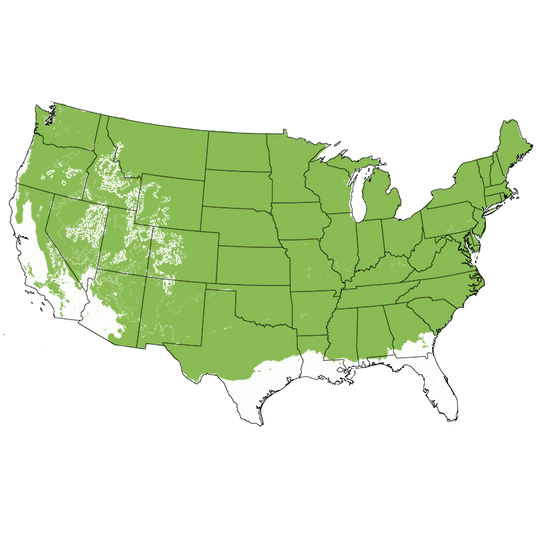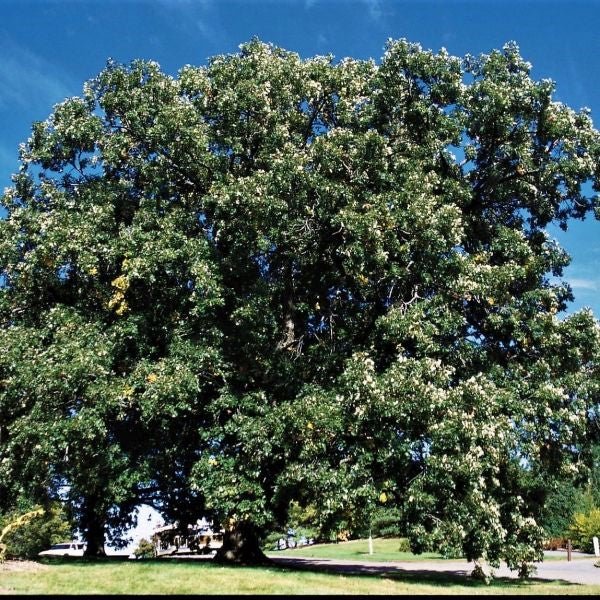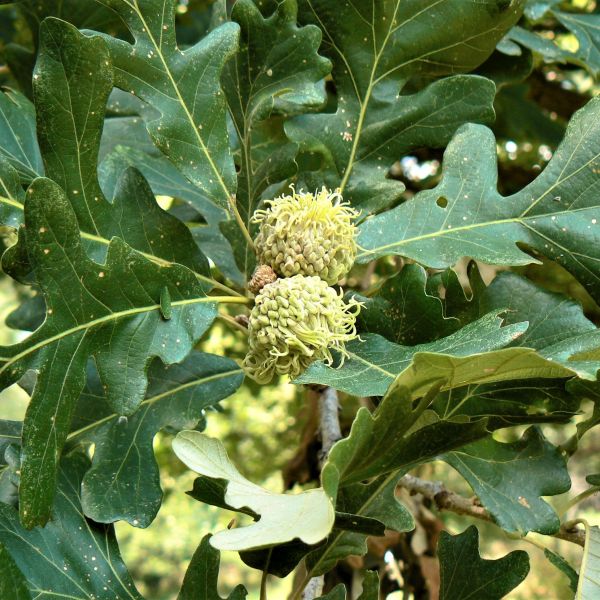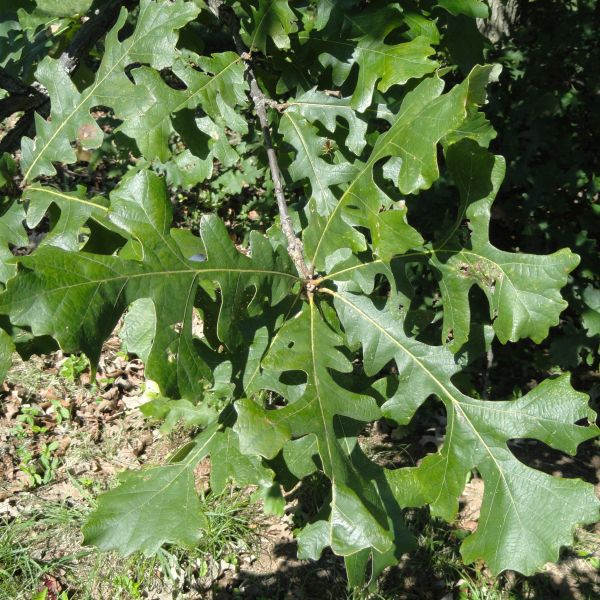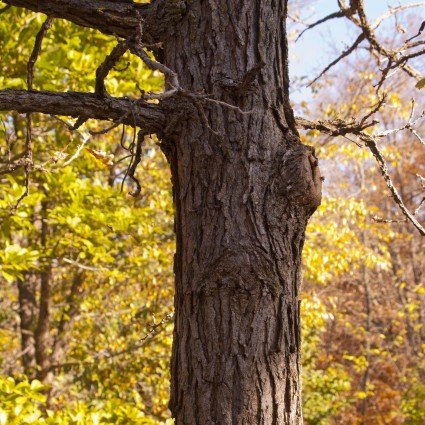Bur Oak Tree
Quercus macrocarpa
Plant Sentry™
Plant Sentry™

Plant Sentry™ Protected
Your order is protected by our compliance system that:
- Prevents restricted plants from shipping to your state
- Ensures plants meet your state's agricultural requirements
- Protects gardens from invasive pests and diseases
Delivery and Shipping
Delivery and Shipping
Delivery and Shipping
Fast, Safe Plant Delivery
Ships in 3-4 business days • Tracking provided • Weather protected
| Under $50 | $9.99 |
| $50 - $99.99 | $14.99 |
| $100 - $149.99 | $16.99 |
| $150 - $198.99 | $24.99 |
| $199+ | FREE |
✓ Zone-specific timing • ✓ Professional packaging • ✓ Health guarantee
Understanding Plant Options
Nature Hills offers plants in two main formats:
- Container Plants: Grown in pots with soil, sized by container volume and plant age
- Bare Root Plants: Dormant plants without soil, sized by height measurements
Container Plant Sizes
Container sizes indicate plant age and growing capacity rather than liquid volume equivalents. Our containers follow industry-standard nursery "trade gallon" specifications, which differ from standard liquid gallon measurements.
Young Plants (6 months to 18 months old)
| Container Size | Actual Volume | Metric Equivalent |
|---|---|---|
| 2" x 2" x 3" | 0.18 - 0.21 dry quarts | 0.20 - 0.23 dry liters |
| 4" Container | 0.31 - 0.87 dry quarts | 0.35 - 0.96 dry liters |
| 4.5" Container | 0.65 dry quarts | 0.72 dry liters |
| 6" Container | 1.4 dry quarts | 1.59 dry liters |
| 1 Quart | 1 dry quart | 1.1 dry liters |
| 5.5" Container | 1.89 dry quarts | 2.08 dry liters |
Established Plants (18 months to 2.5 years old)
| Container Size | Actual Volume | Metric Equivalent |
|---|---|---|
| 2 Quart | 2 dry quarts | 2.2 dry liters |
| #1 Container | 2.26 - 3.73 dry quarts | 2.49 - 4.11 dry liters |
| 5" x 5" x 12" | 3.5 - 4.3 dry quarts | 3.85 - 4.74 dry liters |
Mature Plants (2-4 years old)
| Container Size | Actual Volume | Metric Equivalent |
|---|---|---|
| #2 Container | 1.19 - 1.76 dry gallons | 5.24 - 7.75 dry liters |
| #3 Container | 2.15 - 2.76 dry gallons | 8.14 - 12.16 dry liters |
Large Plants (3-5 years old)
| Container Size | Actual Volume | Metric Equivalent |
|---|---|---|
| #5 Container | 2.92 - 4.62 dry gallons | 12.86 - 20.35 dry liters |
| #6 Container | 5.25 - 6.01 dry gallons | 23.12 - 26.42 dry liters |
| #7 Container | 5.98 - 6.53 dry gallons | 26.34 - 28.76 dry liters |
Bare Root Plants
Bare root plants are sold by height from the root system to the top of the plant. Plants may exceed minimum height requirements.
Common Sizes:
- Trees: 1 foot, 2 feet, 3 feet, 4 feet, 5 feet, 6 feet
- Shrubs & Perennials: 1 foot, 18 inches, 2 feet
Important Notes
Container Volume Specifications
- Trade Gallon Standard: Our containers follow industry-standard "trade gallon" specifications established by the American National Standards Institute (ANSI Z60.1) for nursery stock
- Volume Variations: Actual soil volume may vary due to plant root systems and growing medium settlement
- Age Indicators: Container size primarily indicates plant age and maturity rather than liquid volume equivalents
Growing Conditions
- Plant size can vary based on variety and growing conditions
- Container size helps indicate plant maturity and establishment level
- Larger containers generally mean more established root systems and faster landscape establishment
Seasonal Availability
- Bare root plants are available seasonally when dormant
- Container plants are available throughout the growing season
- Specific varieties may have limited availability in certain sizes
Questions?
For questions about specific plant sizes or availability, please contact our plant experts who can help you choose the right size for your landscape needs.

Plant Sentry™ Protected
Your order is protected by our compliance system that:
- Prevents restricted plants from shipping to your state
- Ensures plants meet your state's agricultural requirements
- Protects gardens from invasive pests and diseases
Plant Profile & Growing Essentials
Cold hardy, Native, Fall Color/Interest, Clay Tolerant, Heat Tolerant, Drought resistant, Hedge/Screen, and Non-invasive
Specifications
Specifications
-
Botanical Name
-
Height
-
Width
-
Growing Zones
-
Sunlight
-
Growth RateModerate
-
Flower Color
-
Leaf Color
-
Fall Color
-
NativeYes
-
Pollinator FriendlyYes
-
Bloom PeriodEarly Spring
-
Does Not Ship ToAK, CA, FL, HI, ID, LA, MT, OR
Planting & Care Instructions
Planting & Care Instructions
Leave a Mighty Legacy, Plant Native Bur Oak
If you have the space and want to make an enormous visual impact in your landscape, leave your mark for future generations by planting the spectacular Bur Oak Tree (Quercus macrocarpa). This tree is an outstanding ornamental specimen. Bur Oak is impressive, to say the least. Its coarse, rugged, rounded outline delivers a strong character in the landscape.
Bur Oak is a wonderful deciduous native with a wide-spreading crown which can attain a massive overall size in open areas. Consider it the northern answer to the Southern Live Oak with its gravitas and charm. In a forest setting, the trunk will soar straight, and the canopy will be higher.
These stately trees typically live for hundreds of years! A member of the White Oak group, this massive tree is native to the eastern United States and can be found all along the muddy Missouri River valley of North America. But Bur Oak will grow beautifully from Alaska to Texas, further proof of its mighty strength.
As you might imagine, it’s tolerant of a variety of soil and water conditions. It also adapts well to urban settings. Such a wide regional disbursement also brings plenty of nicknames. It is sometimes spelled Burr Oak and is also called Mossycup Oak because of its unique capped acorn.
From spring to summer the Bur Oak flaunts its distinctive, lobed, shiny and deep green leaves. The leaves are large, sometimes getting to be 8 or 10 inches long and they have 5-9 rounded lobes of varying size.
Each characteristic leaf usually has a pair of very deeply indented areas that almost reach the midrib of the leaf. Leathery foliage remains shiny dark green during the growing season and fall color is a pleasing mix of russet brown and yellow.
Bur Oak is an investment in our shared future. It produces the largest acorns of all North American Oaks that feature a mossy scale or bur near the rim. The Latin species name 'macrocarpa' translates to large fruit.
These acorns are an invaluable mast resource for wildlife food such as squirrels, birds, ducks and deer. Use in planned food forests. But please note that young trees may not begin producing acorns for 30 years or more. The large, fringed capped, yellow-brown, Bur Oak acorns develop on mature plants from elegant spring catkin flowers.
Young bark on the twigs can have a corky ridge, much like you see on a Burning Bush twig. The bark on the main trunk and larger branches is very deeply incised and characteristically coarse and slightly interlaced.
This is bark that adds winter interest to your landscape. It begs for children to run their hands along its fascinating length.
There may be no better memorial tree to celebrate the life of a loved one than a Bur Oak. Plant one upon the birth of a child, or as a special way to mark the start of a new household or marriage.
Bur Oak is truly one of our finest national treasure trees. Plant it with pride, and order from the experts at Nature Hills. We take special care with all of our plants, but Bur Oak is one of our staff favorites. Order today!
How to Use Bur Oak in the Landscape
Carefully consider your planting site when establishing a new Bur Oak. The wide-spreading, large size of this long-lived tree makes an ideal specimen shade tree for large, open, windy locations.
For large property owners with big open areas, consider planting your own Oak Savanna. Savannas are grassy areas with a sprinkling of Oak trees loosely spaced.
Use an informal grouping of 2, 3, 5 or even 7 plants. Vary the spacing between plants from 50 to 20 feet apart and avoid using a straight line for the most natural looking planting. Create a few loosely triangular groups, using an odd number of plants. Leave space for a wilderness path between groups.
We recommend setting out your container trees in your landscape first before digging your holes. Take time to study each tree in order to finalize a design that makes the most of your land contours and elevations. Turn the containers 360 degrees, so you can study all the angles of your trees. It's a momentous occasion to plant Bur Oaks, after all! Enjoy the process.
Trees that are planted closer together will combine their large, wide-spreading canopies into one big common head. It’s a wonderful look, just like you might see in nature.
Bur Oak is a great tree to include in your shelterbelts and windbreaks because of their tough, maintenance-free nature. They are highly resistant to wind and ice damage. Plant 10 - 18 feet apart on center. Measure from the center of one to the center of the next.
Use in food forests with Red Oak and Pin Oaks to feed wildlife. Include Chickasaw Plum thickets, Redosier and Viburnum shrubs.
Municipalities love to include Bur Oaks in wide boulevards and in parks because they are long-lived. Follow their lead and use a specimen tree in your lawn. You’ll never regret the choice.
- Enormous Native White Oak
- Long Lived - Up To 400 Years
- Valuable Wood
- Spreads Broad & Wide in Open Areas
- Grows Straight With A High Canopy in Forests
- Leathery, Smooth Lobed Dark Green Leaves
- Red Fall Color & Dried Leaves Remain On Tree Until Spring
- Marvelously Textured Bark
- Excellent Tree for Shelterbelts & Windbreaks
- Wind Tolerant Tree Seldom Sees Ice Damage
- Magnificent Specimen Tree
- Large Acorns Attract Wildlife
- Once Established, Growth Rate is Faster Than You Think
#ProPlantTips for Care
Like many trees, Bur Oak prefers a moist, well-drained soil for best results – but know too that it tolerates clay soils, dry soils, and drought very well. They even tolerate short periods of extremely wet soils and are many times suggested for use in Rain Gardens. They love the river bottom soils in the Midwest and northern regions well up into Canada.
Give young Bur Oak trees a moderate amount of water on a regular basis to keep them stress free. It will thrive in full sun. Once your new Bur Oak gets established in your native soil, you will find that it does grow much faster than you think. Established Oaks exhibit excellent vigor.
Oaks are best pruned during the winter dormant period. The best time is usually January and February, well before they start to come out of dormancy.
As with all trees, it is important not to plant your Bur Oak too deeply. Instead, plant it at the same depth it was growing in the nursery container.
- Full Sun Tree
- Very Adaptable To Any Well-Drained Soil Types
- Moderate to Low Moisture Needs - Drought Tolerant Once Established
- Prune When Dormant
- Very Low Maintenance
This beautiful, rugged tree will bring wildlife to your yard and last for many generations. Bur Oak is one of the original dominant trees of North America. Order yours today and rebuild our precious natural resources!
